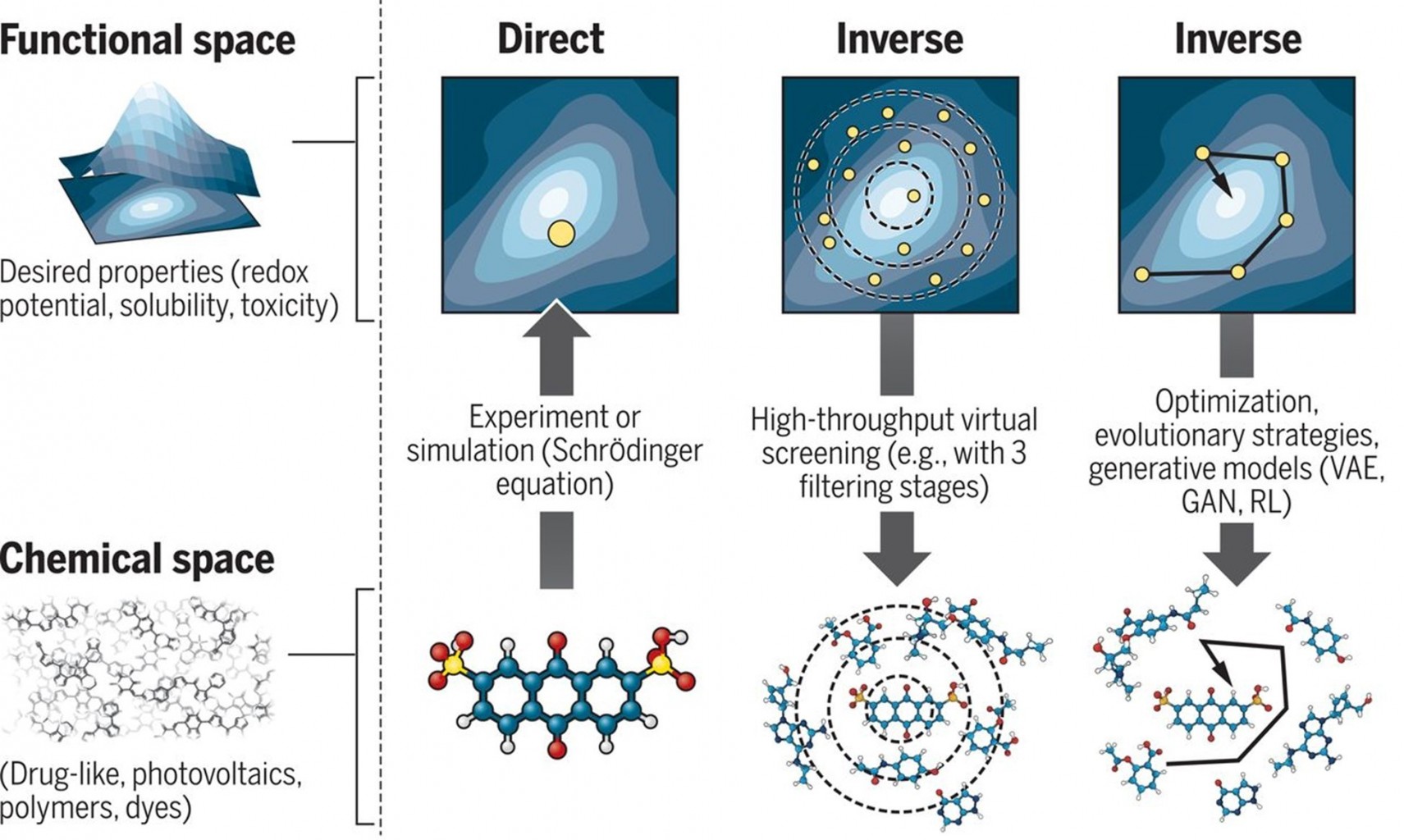Inverse design of energy materials using atomistic deep learning
Inverse design of energy materials using atomistic deep learning
Promotor(en): S. Cottenier, T. Verstraelen /25420 / Solid-state physicsBackground and problem
To satisfy our hunger for energy we are in dire need of new materials capable of generating, converting, storing and transferring energy at high efficiencies. Common energy applications are for instance photovoltaics and battery materials. More exotic are applications such as thermoelectrics or superconductors, capable of converting or skipping waste heat altogether. So why haven’t we found many of these materials yet? The answer is that the (probably many) useful materials that are waiting for being discovered, are hidden in an ocean of other materials, most of them having by far not an interesting combination of properties. Examining all of those candidates one by one in the lab, is a slow and costly process. Screening them one by one by computational methods first helps to speed up the search, but it remains a fight against an overwhelming number of possibilities to be examined.

A tempting efficient alternative would be to use the concept of inverse design in combination with artificial intelligence. It makes use of state-of-the-art deep learning model such as autoencoders and generative adversarial networks. The basic concept is shown in the figure. The AI learns to reduce the complex atomic structure of a material to a much simpler property space, in which we can investigate more easily. Once a point with the desired combination of properties is found, we ask the AI to transform it back to the complex space of crystal structures and suggest the corresponding material.
Goal
You will then analyze the structure of the property space, as well as explain and verify the best candidates. The physical mechanism will be studied through an analysis of compositions, geometries, insights from literature and new ab initio simulations. These insights can then be used to suggest new candidate materials for energy applications, as well as provide insights into how these materials differ from existing ones.
Collaboration with company
Epotentia (epotentia.com) for machine learning support
- Study programmeMaster of Science in Engineering Physics [EMPHYS], Master of Science in Sustainable Materials Engineering [EMMAEN], Master of Science in Physics and Astronomy [CMFYST]Keywordsenergy materials, ab initio, machine learningReferences
List of figures:
Figure X: principle of inverse design using an intermediate space.References:
• https://science.sciencemag.org/content/361/6400/360
• https://www.cell.com/matter/fulltext/S2590-2385(19)30175-4
